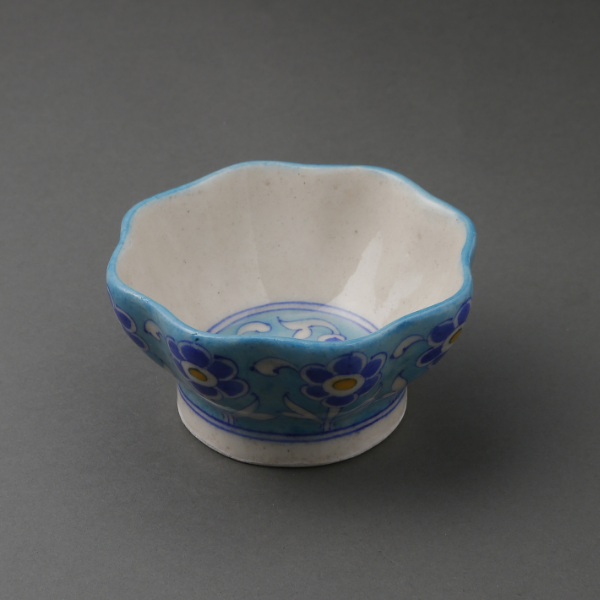
Map Loading...
Khurja Pottery
Khurja
Khurja Pottery originates from Khurja, a small town in the Bulandshahr district of Uttar Pradesh. Also known as The Ceramic Town, Khurja houses nearly 400 ceramic factories.
Khurja Pottery is a distinct style of pottery as it is not made using traditional clay but a mix of clay with feldspar and quartz. Feldspar and Quartz are two materials that are used to add natural glazing to clay even before moulding the article. It is said to be the oldest glazed pottery of India and has identifiable painted floral patterns in blue or brown colour on off-white backgrounds. Initially, red clay pottery was made then later they moved on to blue glaze and on red clay articles with engravings of white clay, painting floral designs. Khurja pottery is protected under the Geographical indication (GI) of the Agreement on Trade-Related Aspects of Intellectual Property Rights (TRIPS) agreement.
The history of Khurja Pottery goes back to about 600 years when some of the potter’s families moved to Khurja and worked on this skill. There are two conflicting versions of the origins of the pottery-manufacturing sector in Khurja. One version speaks about a historical cluster of traditional potters, who had established themselves in Khurja, several hundred years ago. In this version, potters from Egypt and Syria accompanied the Afghan King Taimur Lung when he passed by Khurja on an easterly campaign 500 years ago. The second theory suggests that the craft of making Khurja stoneware can be followed back to the Mughal realm, during the rule of Emperor Mohammad-bin-Tughlak (mid-fourteenth Century). That’s not it when it comes to the tales of the origin of Khurja pottery in India. The author of ‘Pottery-making Cultures and Indian Civilization’, Baidyanath Saraswati discusses that “Bulandshahr’s Khurja is certainly one of the ancient spots for glazed pottery in India”. Not only this, he adds, “The artisans refer themselves as Multani Kumhars and suggest that their origin was Multan”.
The pottery industry currently employs about 25,000 workers, with a further 5000-7000 engaged in various support services and allied activities.
Chiefly whiteware is produced in Khurja. However, a small amount of high fired terracotta is also produced for export markets. Most pottery units in Khurja manufacture crockery (stoneware), HT/LT insulators and decorative wares (stoneware). There are only a few specialised units that manufacture sanitary wares, bone china and chemical porcelain.
Craft
Pottery
Material
Clay
Technique
Painting, Glazing, Pottery
Showcase




